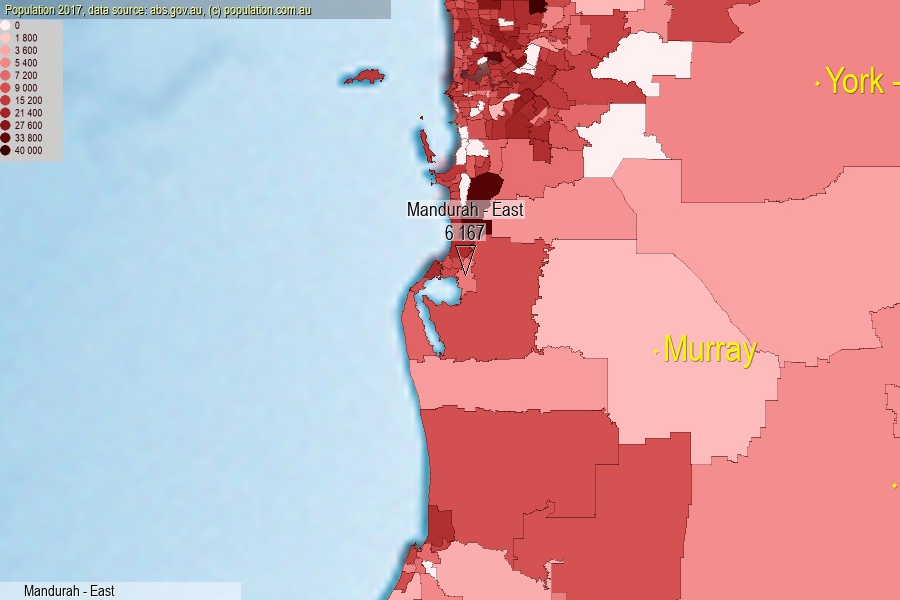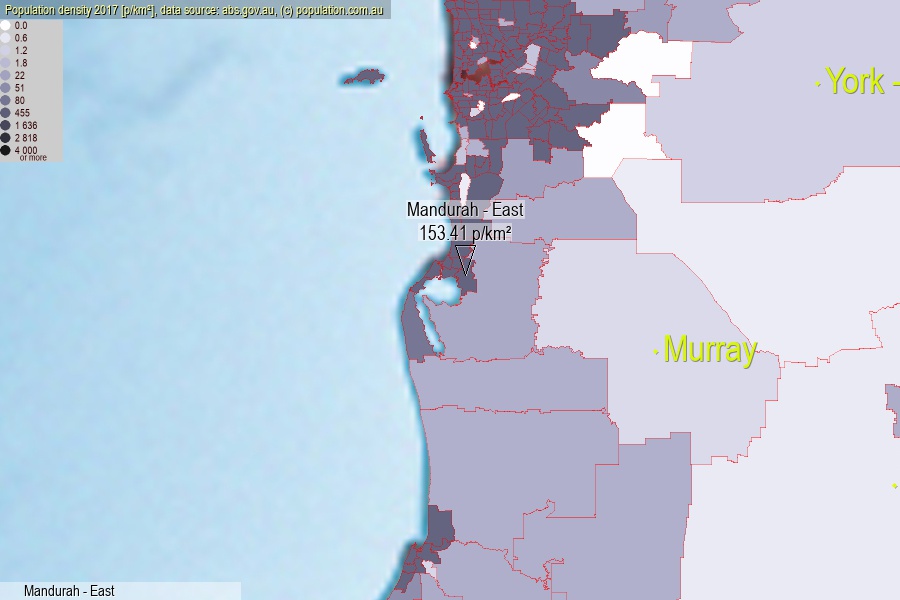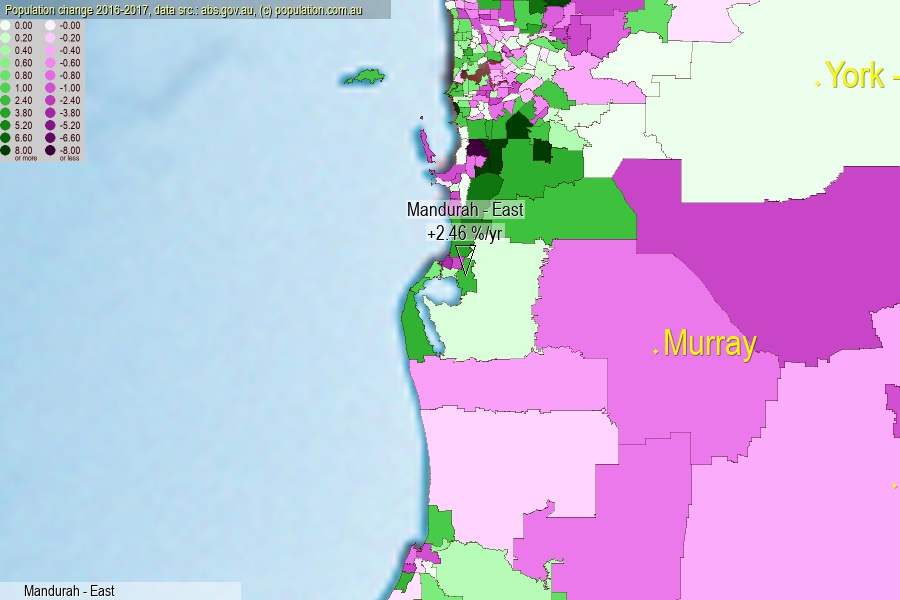 population.com.au
population.com.auLast official estimated population of Mandurah - East (as Statistical Area Level 2) was 6 167 people (on 2017-06-30)[2]. This was 0.02% of total Australian population and 0.238% of WA population. Area of Mandurah - East is 40.20 km², in this year population density was 153.41 p/km² . If population growth rate would be same as in period 2016-2017 (+2.46%/yr), Mandurah - East population in 2025 would be 7 490. [0]



Click to enlarge. Mandurah - East is located in the center of the images.
Population [people], population density [p./km²] and population change [%/year] [2]
View borders » (new window) [4]
[1991-1992] +1.15 %/Yr.
[1992-1993] +1.34 %/Yr.
[1993-1994] +5.52 %/Yr.
[1994-1995] +8.91 %/Yr.
[1995-1996] +5.92 %/Yr.
[1996-1997] +7.62 %/Yr.
[1997-1998] +6.69 %/Yr.
[1998-1999] +6.50 %/Yr.
[1999-2000] +2.98 %/Yr.
[2000-2001] +5.40 %/Yr.
[2001-2002] +3.99 %/Yr.
[2002-2003] +6.48 %/Yr.
[2003-2004] +4.96 %/Yr.
[2004-2005] +3.66 %/Yr.
[2005-2006] +2.18 %/Yr.
[2006-2007] +0.80 %/Yr.
[2007-2008] +0.74 %/Yr.
[2008-2009] +0.87 %/Yr.
[2009-2010] +0.49 %/Yr.
[2010-2011] +0.63 %/Yr.
[2011-2012] +3.15 %/Yr.
[2012-2013] +3.78 %/Yr.
[2013-2014] +3.45 %/Yr.
[2014-2015] +2.89 %/Yr.
[2015-2016] +2.57 %/Yr.
[2016-2017] +2.46 %/Yr.
[0] Calculated with linear interpolation from officially estimated population
[1] Read more about SA2 and Australian Statistical Geography Standard (ASGS) on abs.gov.au
[2] Population data from Australian Bureau of Statistics (Population and density: 2017; change: 2016-2017)
[3] Digital Boundaries: Australian Statistical Geography Standard (ASGS) 2016.
[4] Border coordinates are simplifyed using Ramer-Douglas-Peucker algorithm.